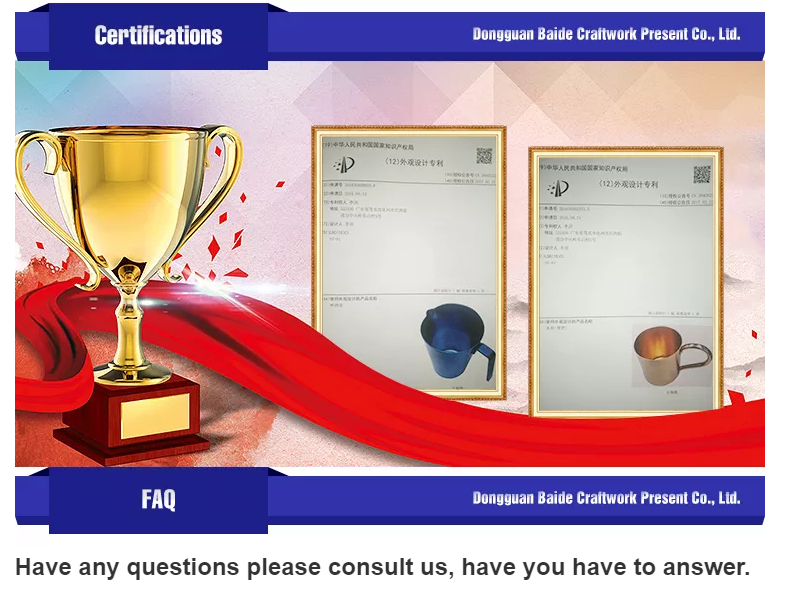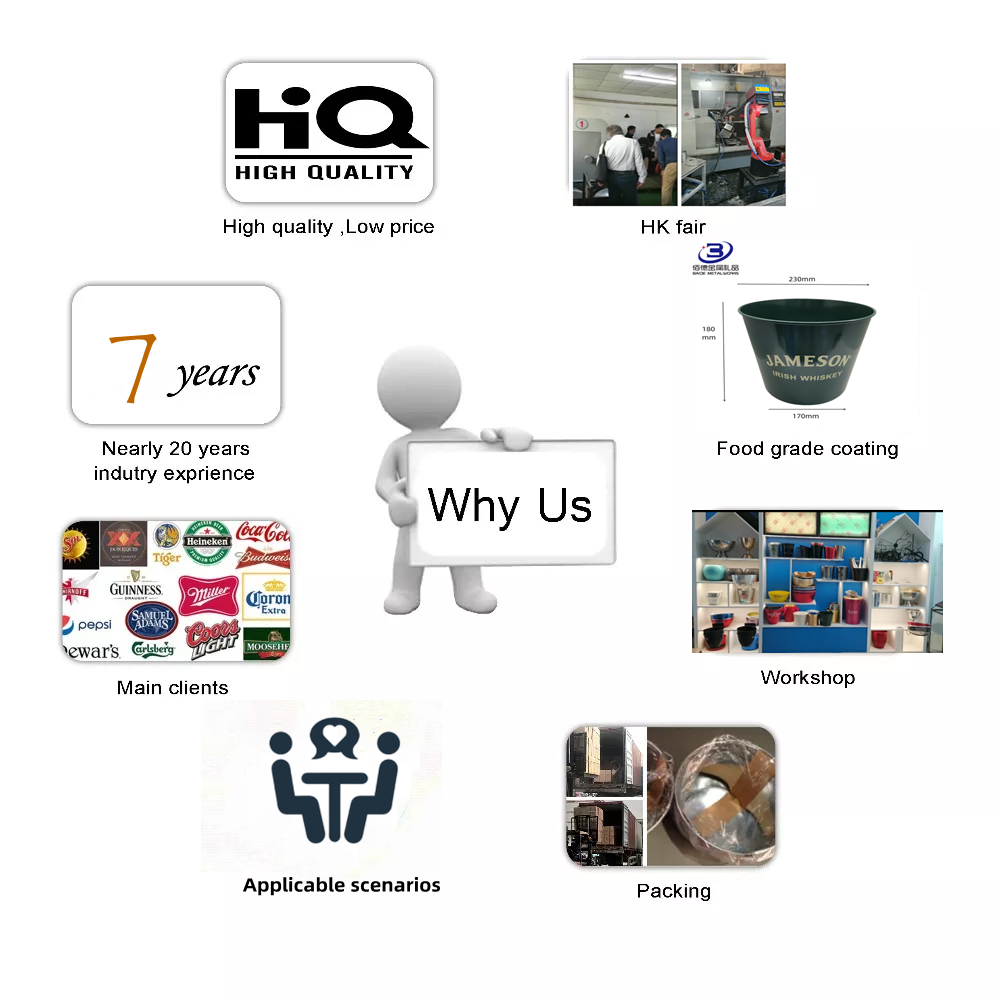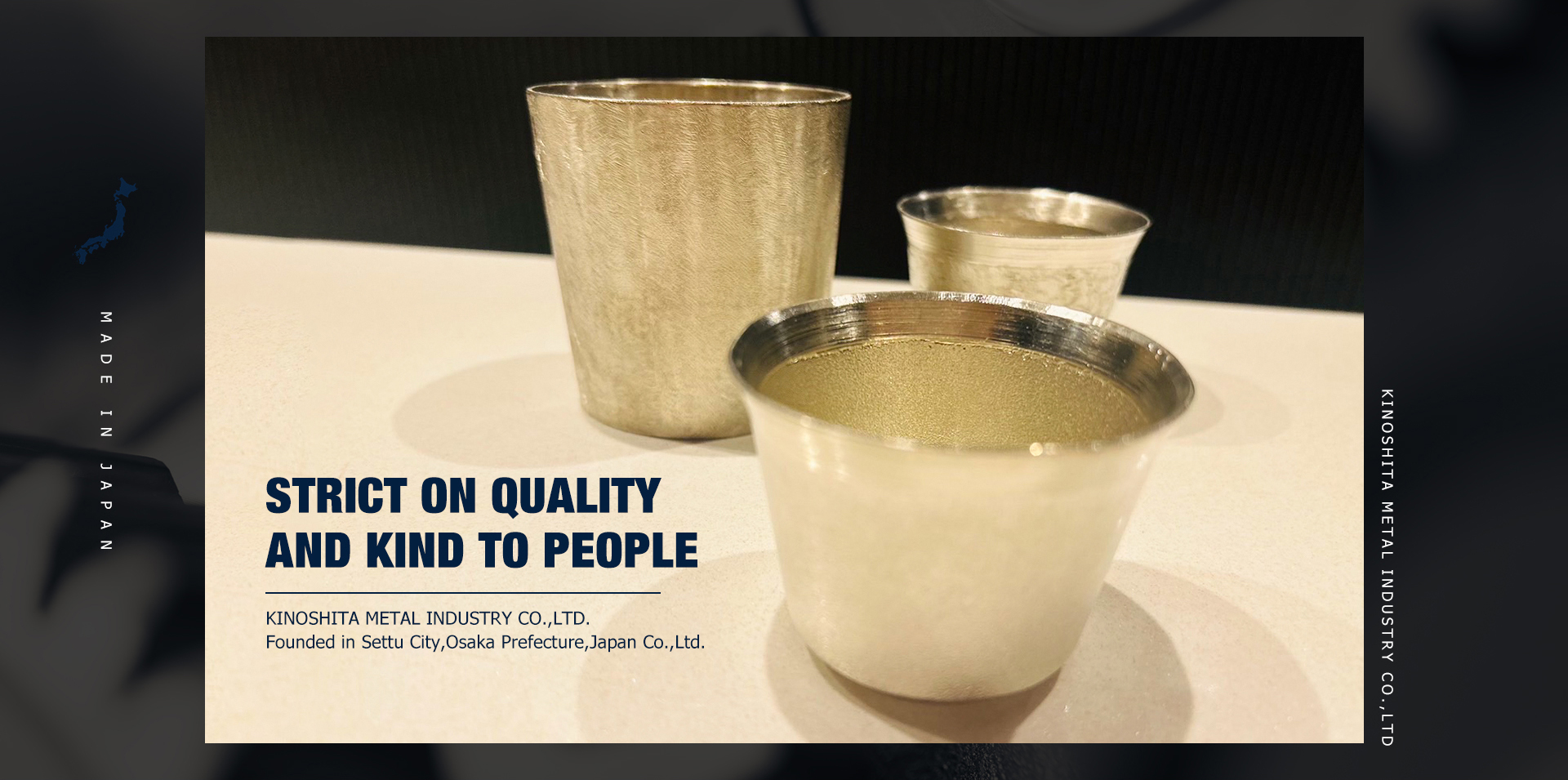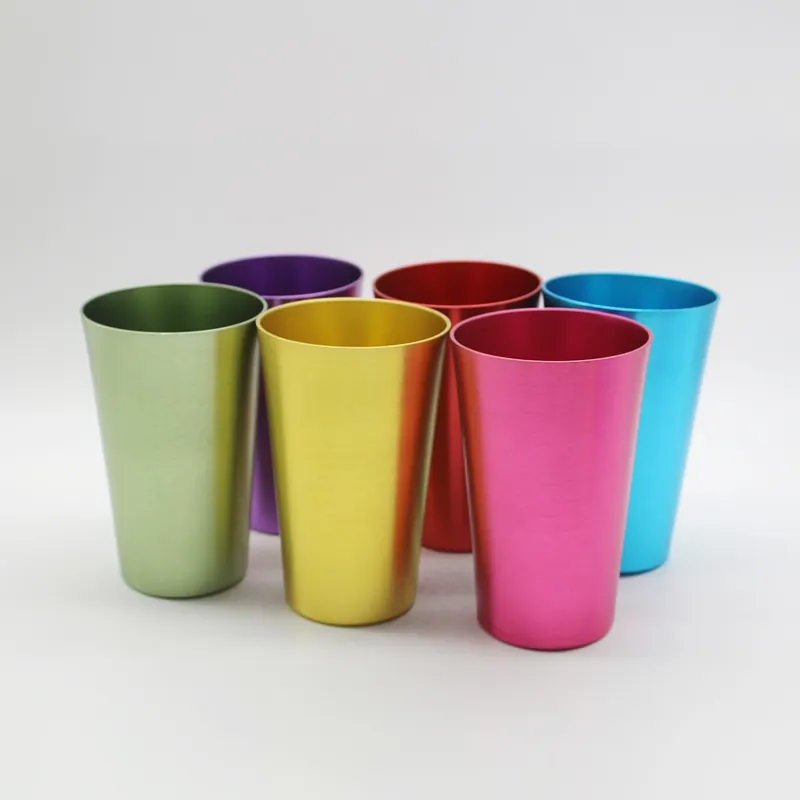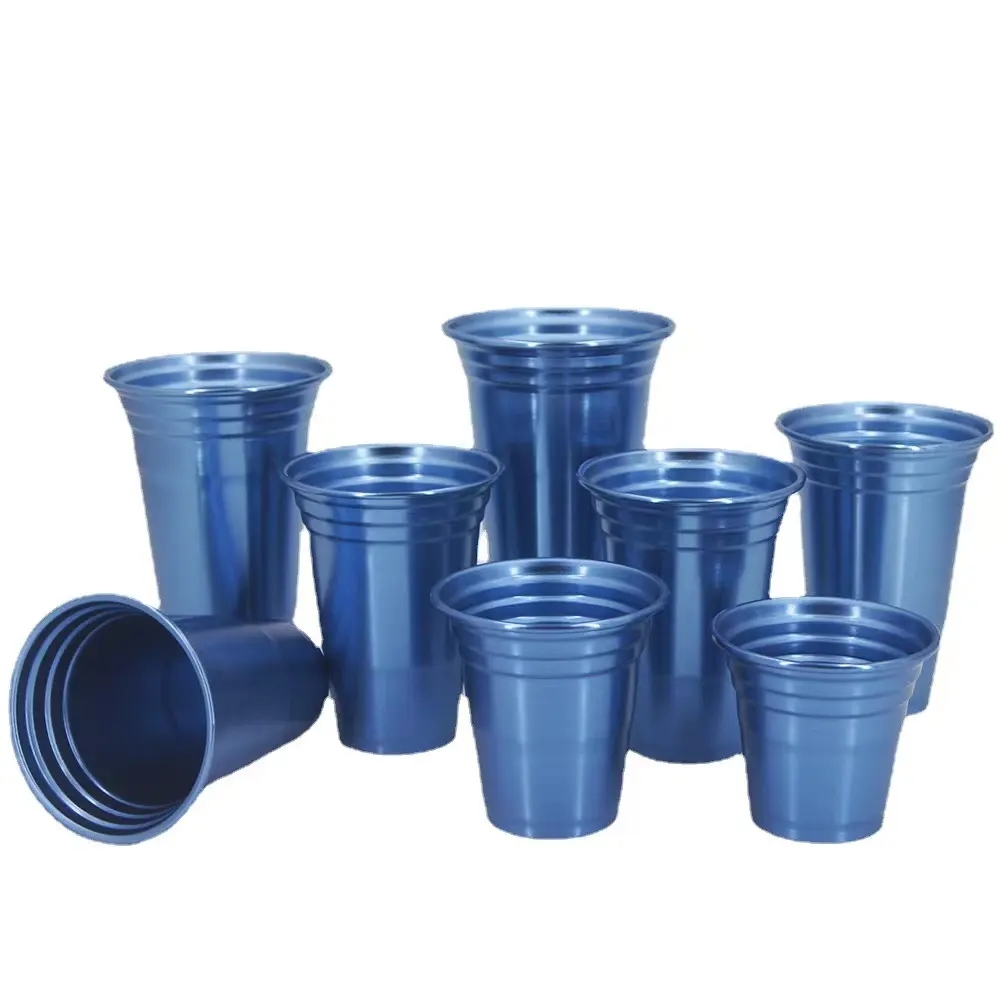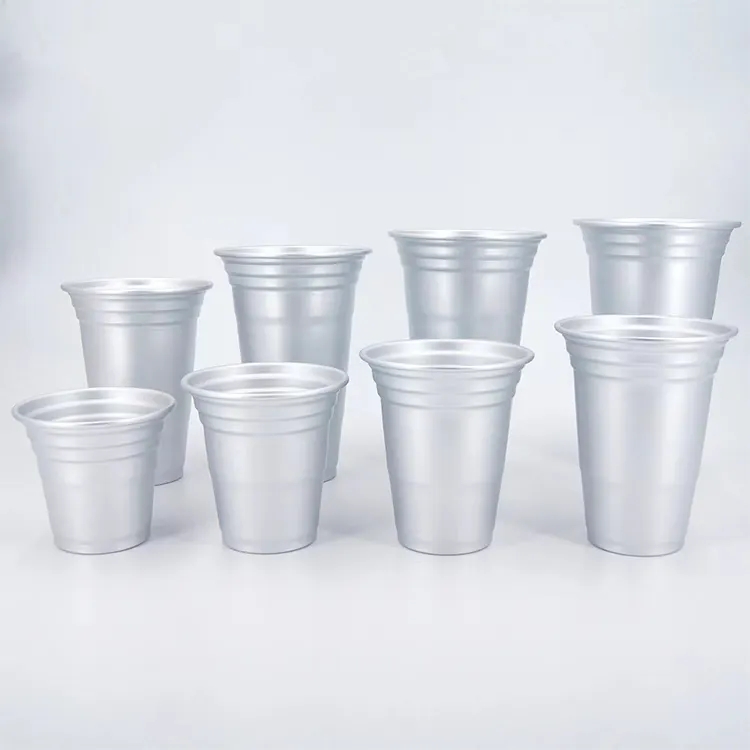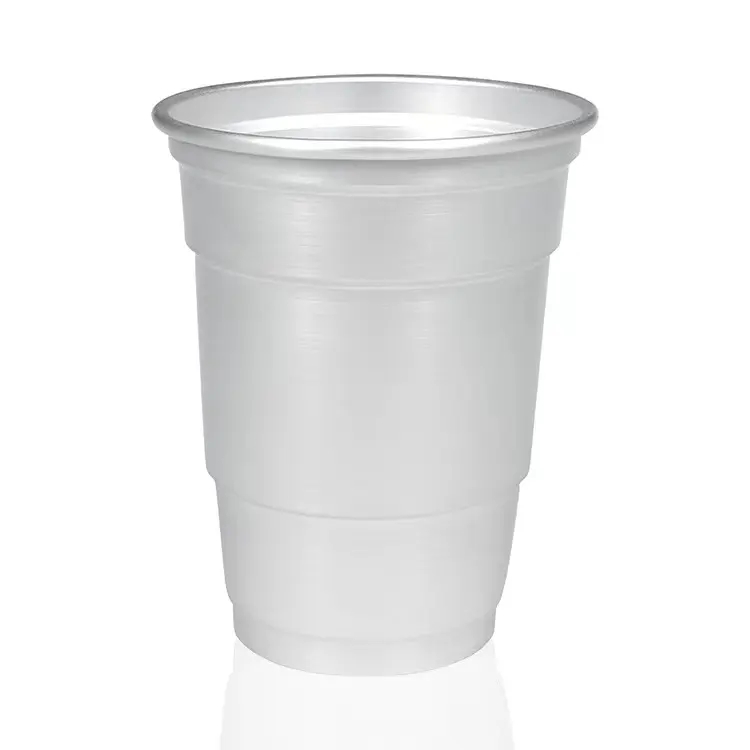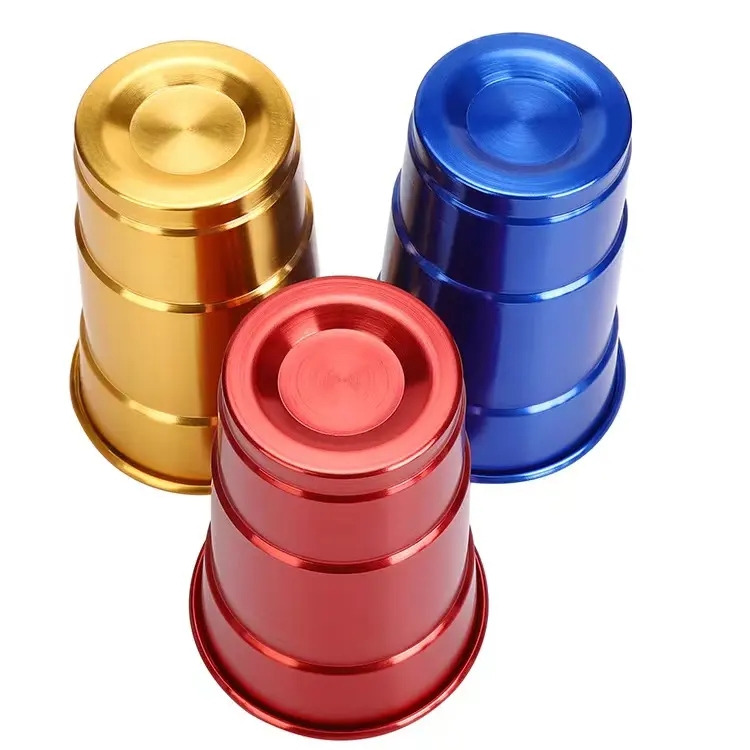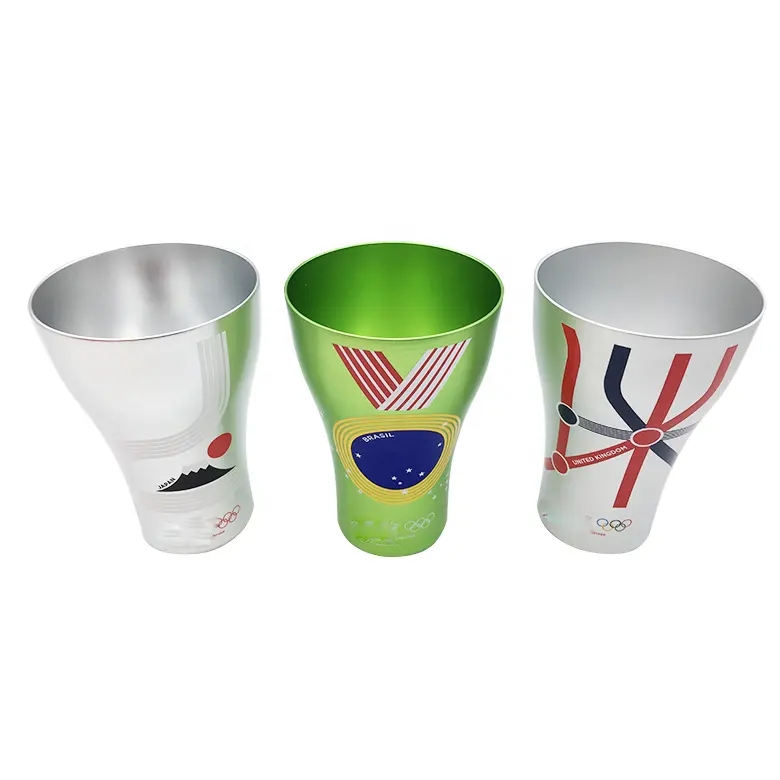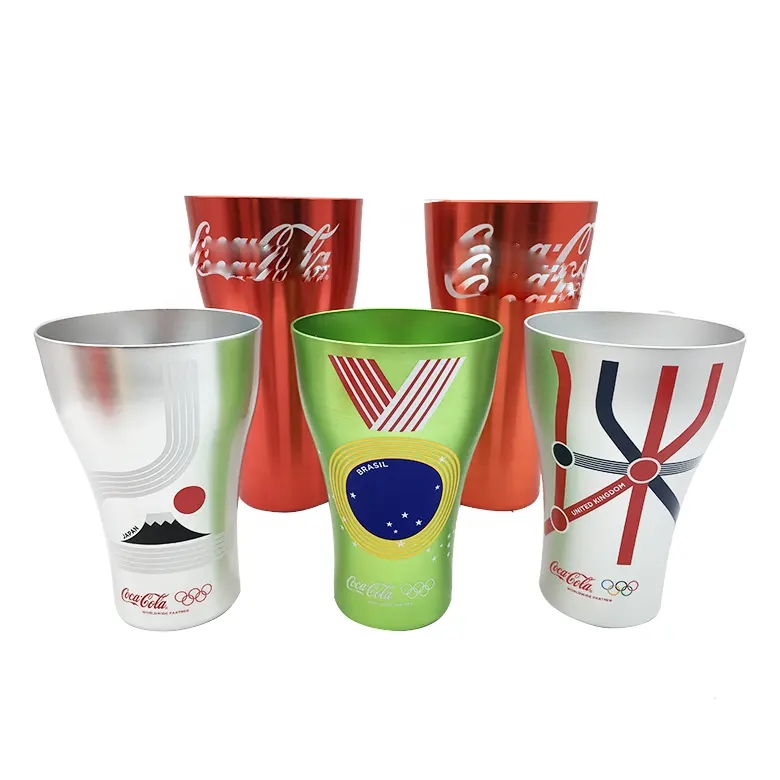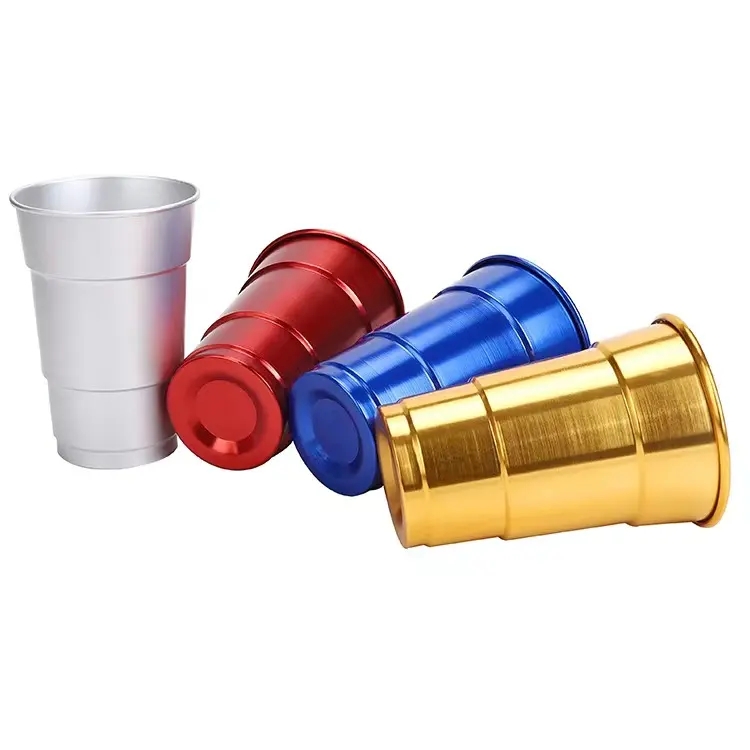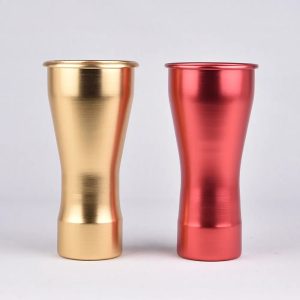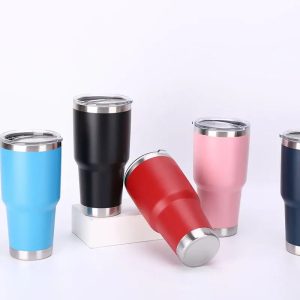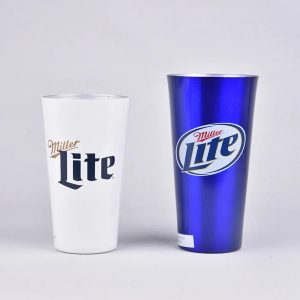Aluminum tumblers offer several benefits:
- Durability: They are quite sturdy and resistant to breakage, making them suitable for outdoor use or for households with active kids.
- Lightweight: Aluminum is lightweight compared to glass or stainless steel, making these tumblers easy to carry around.
- Insulation: They can keep drinks colder for longer periods, especially when used with insulated designs or double-walled construction.
- Eco-friendly: Aluminum is recyclable, so these tumblers are a sustainable choice compared to single-use plastic cups.
- Variety: They come in various colors, designs, and finishes, offering a range of options to suit different preferences.
- Non-reactive: Aluminum doesn’t react with acidic liquids, unlike some other materials, ensuring that the taste of beverages remains unaffected.
- Affordability: They’re often more affordable than tumblers made from other materials like stainless steel or high-end glassware.
However, there are some considerations to keep in mind with aluminum tumblers. They may not be suitable for hot beverages, as they can conduct heat, potentially making the drink too hot to handle. Additionally, some people might not prefer the metallic taste that can sometimes accompany aluminum containers, although this is less of an issue with modern manufacturing methods.
Aluminum tumblers offer several advantages:
- Durability: Aluminum is a robust material, making these tumblers resistant to breakage and ideal for both indoor and outdoor use. They can withstand accidental drops or impacts better than glass or ceramic alternatives.
- Lightweight: Aluminum is lightweight, making the tumblers easy to handle and carry around. This feature is especially beneficial for picnics, camping trips, or for children who might struggle with heavier drinkware.
- Thermal Properties: Aluminum has good thermal conductivity. While this can be a disadvantage for hot beverages (as it might transfer heat quickly), for cold drinks, it can help maintain their temperature for longer periods, keeping beverages cooler.
- Non-reactive: Unlike some other metals, aluminum doesn’t react with acidic beverages, preventing any alteration in taste. This ensures that your drink retains its intended flavor without any metallic aftertaste.
- Variety: Aluminum tumblers come in various designs, colors, and finishes, allowing for personal preferences and aesthetic choices. They can be found in polished, anodized, or even powder-coated finishes to suit different styles.
- Environmentally Friendly: Aluminum is highly recyclable, making these tumblers a more sustainable choice compared to single-use plastic cups. They contribute less to environmental pollution and can be reused multiple times.
- Affordability: Aluminum tumblers are often more affordable than their counterparts made from materials like stainless steel or premium glassware, providing a cost-effective option without compromising quality.
- Maintenance: They are relatively easy to clean and maintain. Most aluminum tumblers are dishwasher safe and can also be hand-washed without much effort.
These advantages collectively make aluminum tumblers a popular choice for various settings, whether it’s for casual home use, outdoor activities, or even in commercial settings like restaurants or cafés.
Aluminum tumblers are typically packaged using various methods to ensure they arrive safely and in good condition. Some common packaging methods include:
- Individual Boxes: Tumblers may come individually packed in cardboard or paperboard boxes designed specifically for the tumbler’s size and shape. These boxes often have foam inserts or molded cardboard to hold the tumbler securely in place and protect it from scratches or dents during shipping.
- Bulk Packaging: When tumblers are sold in larger quantities, they might be packaged together in bulk. This could involve wrapping them in bubble wrap, plastic sleeves, or using dividers within a larger box to prevent tumblers from bumping into each other and causing damage.
- Shrink Wrapping: Some manufacturers shrink wrap sets of tumblers together. This method involves covering the tumblers in plastic film and then using heat to shrink the film tightly around them, creating a secure package that keeps the items together and protected.
- Display Packaging: For retail purposes, aluminum tumblers might be displayed in packaging designed to showcase the product’s features. This packaging could include clear plastic or cellophane wrapping, allowing customers to see the tumblers while keeping them secure.
- Customized Packaging: Depending on the brand or seller, custom-designed packaging might be used. This could include branded boxes, unique designs, or additional inserts like informational cards or promotional materials.
- Padding and Fillers: Regardless of the packaging method, it’s common to include padding materials such as foam inserts, paper fillers, or air cushions to absorb shocks and protect the tumblers from getting damaged during transit.
The choice of packaging method often depends on factors like the manufacturer’s preference, the intended market (retail, wholesale, online sales), and the desired presentation of the product to customers. The goal is to ensure the tumblers are delivered in pristine condition to the end consumer.
